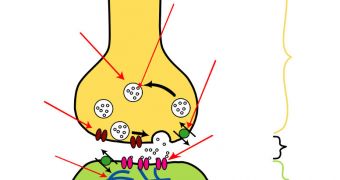As human beings, we are able to carry out tremendously complex actions in a heartbeat, without giving them too much thought. The brain controls all the required muscles automatically, and experts have just learned a few more additional detail of how that is done.
Scientists were able to discover how nerve cells called neurons connect to the actual muscles, via a link called the neuromuscular junction. This structure serves the purpose of relaying the electrical signals produced by the brain from the nerve cells that carry it to be business end of the user's wish.
In the new research, experts were puzzled to learn that these connections featured large amounts of nestin, one of the most well known proteins in the international medical community.
Biotechnology experts know it because its presence in immature, underdeveloped cells usually means that those structures are stem cells. Despite knowing this, investigators still have little clues as to whether these high concentrations of nestin exist in neural stem cells, and other such cells.
But large amounts of the molecule can also be found in muscle tissue. Writing in the January 30 advanced online issue of the esteemed scientific publication Nature Neuroscience, experts argue that they managed to learn the reason why that is.
Investigators from the Salk Institute of Biological Studies (SIBS), led by Kuo-Fen Lee, PhD, were able to discover that the protein regulates the formation of neuromuscular junctions. This finding allows experts a better understanding of the signaling mechanisms connecting brain to muscle.
“Nestin was a very well known molecule but no one knew what it did in vivo. Ours is the first study to show that it actually has a physiological function,” explains Lee, who is a professor at the SIBS Clayton Foundation Laboratories for Peptide Biology.
In the future, it may be possible to use the new discoveries to underlie the development of new medical technologies aimed at improving neuromuscular junctions. This could be very useful for people suffering from neuromuscular diseases or spinal cord injuries.
“Currently, in efforts to devise therapies for motor neuron disease or spinal cord injury there is a lot of focus is on how to make neurons survive,” Lee explains, quoted by Science Blog.
“That is important, but we also need to know how to properly form a synapse. If we cannot, the neuromuscular junction won’t function correctly,” he goes on to say.

 14 DAY TRIAL //
14 DAY TRIAL //